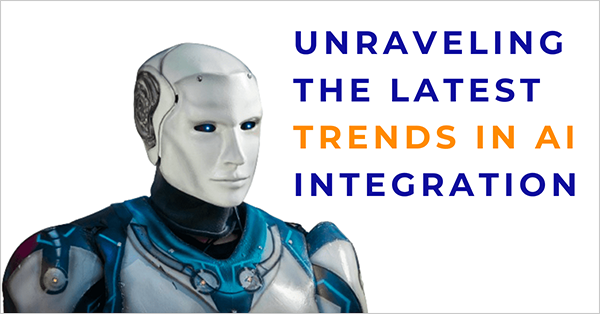
You know, in the present digital world, you can hardly see an industry that remains untouched by artificial intelligence.
Everywhere, from our smartphones to the places we work, there will always be someplace that uses AI to speed up tasks that would have otherwise taken its human counterparts a lot of time.
In this post, we delve into the actual landscape of AI, focusing on the key AI trends for 2024.
Let’s look at the McKinsey AI report:
In 2023, 40% of survey respondents showed big investments for their companies with artificial intelligence. E.g., ChatGPT from OpenAI has massively penetrated our personal and professional lives.
In fact, with the roll-out of OpenAI Enterprise mode, aimed at improving data security, more businesses worldwide resorted to solutions like ChatGPT to automate their routine operations and extract actionable insights from their data.
For this year, 2024, the integration of artificial intelligence into our lives is predicted to grow even more, as many more companies are “unlocking” its potential.
With its cost savings, automation of manual labor, and vast data analytics potential, it has the power to change the way modern businesses function.
But first, we need to understand how to integrate AI into any business and which AI trends govern the development of this exciting technology.
DID YOU KNOW?
According to IBM, 35% of businesses have already embraced AI. It is clear from the statistics below that most leaders are excited about AI’s potential for enhancing capabilities and lowering costs. Netflix has already saved a reported $1 billion by utilizing machine learning, and AI can boost business performance by as much as 40%.
The statement “the newest AI technology is everywhere” is not entirely true, but very close to it thanks to its revolutionary capabilities, which many industries have benefited from.
As an example, we can look into the healthcare industry, where AI-driven diagnostic tools have largely improved disease detection accuracy, leading to more timely and precise treatments.
If you need more examples, check out the finance industry, where artificial intelligence enables a deeper analysis of security and protects financial transactions.
There are many companies like Netflix, Amazon, and other streaming platforms that show the influence of AI integration trends when optimizing user engagement by working with content suggestions (algorithms).
These success stories, although there are many other examples, demonstrate the tangible benefits of this integration across diverse business domains, emphasizing its role in driving innovation and efficiency and forging new competitive advantages.
Let’s explore the latest trends in artificial intelligence shaping the field of AI integration:
Check the following table to examine how the implementation of AI trends differs across industries:
| Industry | Example |
| Healthcare | AI-powered diagnostic tools provide more accurate and rapid disease diagnosis. |
| Finance | AI algorithms for fraud detection and risk management. |
| Agriculture | AI focuses on crop monitoring and robotic harvesting. |
| Manufacturing | AI-powered forecasting reduces time and optimizes production operations. |
| Energy | AI control for electricity grids, predicting equipment repair of equipment, and demand projections. |
| Retail | AI-powered suggestions improve consumer experiences and increase sales. |
| Transportation | Working with autonomous cars, traffic predictions, and management. |
| Telecom | Refers to chatbots, fraud detection, and network infrastructure. |
| Education | Personalizing learning platforms and intelligence tutoring to increase the student experience in real-time. |
| Real Estate | Analyzing market trends and managing virtual property tours. |
To make sure your AI implementation process goes smoothly and painlessly, consider the following advice:
The future of artificial intelligence looks promising, marked by anticipated advancements in the following areas:
Other possible new developments on the horizon may include:
To navigate this dynamic landscape effectively, companies should:

The Global Artificial Intelligence (AI) Market Size was valued at USD 168.5 Billion in 2022 and the Worldwide Artificial Intelligence (AI) Market Size is expected to reach USD 2,760.3 Billion by 2032
In conclusion, artificial intelligence has an undeniable impact on every business domain, so we cannot help but keep up.
All of the developments highlighted above show the wide range and complexity of AI applications and tendencies.
This shows us the ever changing nature of artificial intelligence, which allows companies to increase their productivity, make decisions based on data, and give a more personalized experience to their users.
Every day, more companies are delving into working with artificial intelligence, and that is the main reason for taking into consideration the practical tips discussed, from choosing the correct tools to paying attention to scalability and flexibility.
Also, all the trends, such as improving natural language processing or the AI ethics framework, continue to shape the trajectory of AI integration.
So, it is really important to foster a culture of constant learning about these integrations to not just adopt the recent trends in artificial intelligence but also form part of the changes that it brings with itself, integrating and anticipating future advantages.
